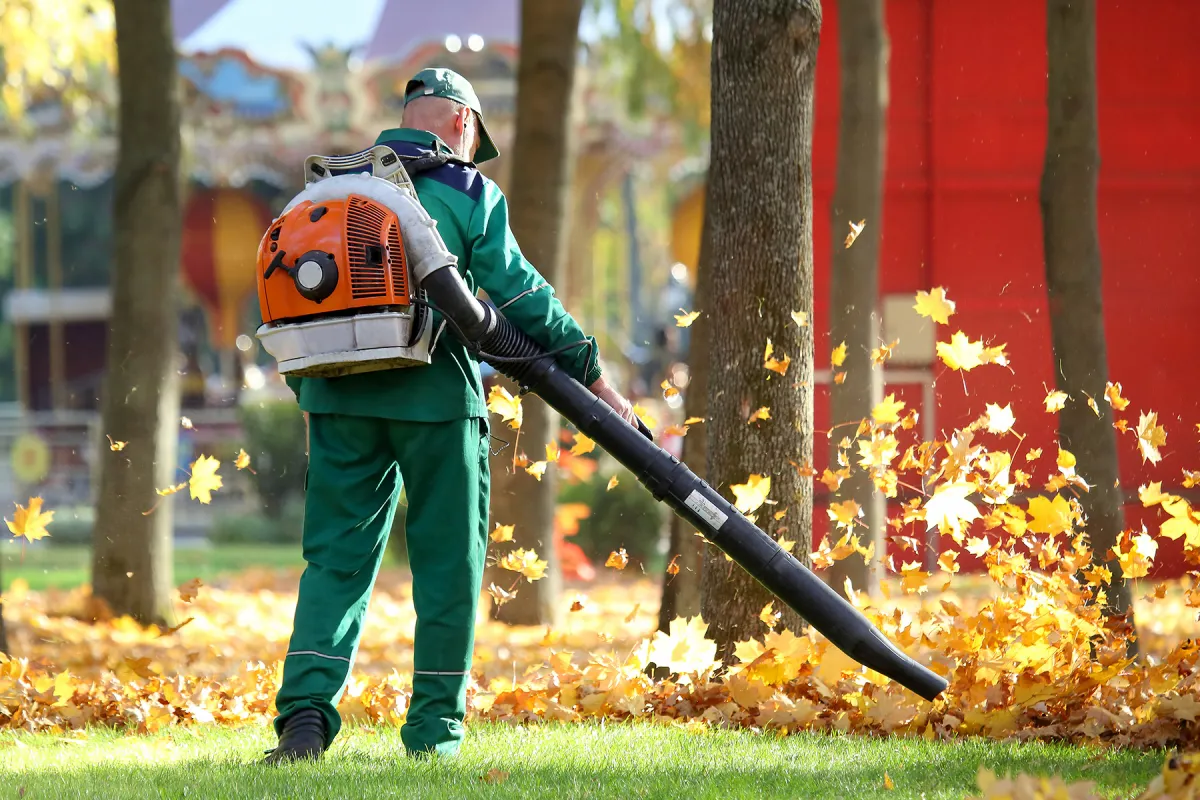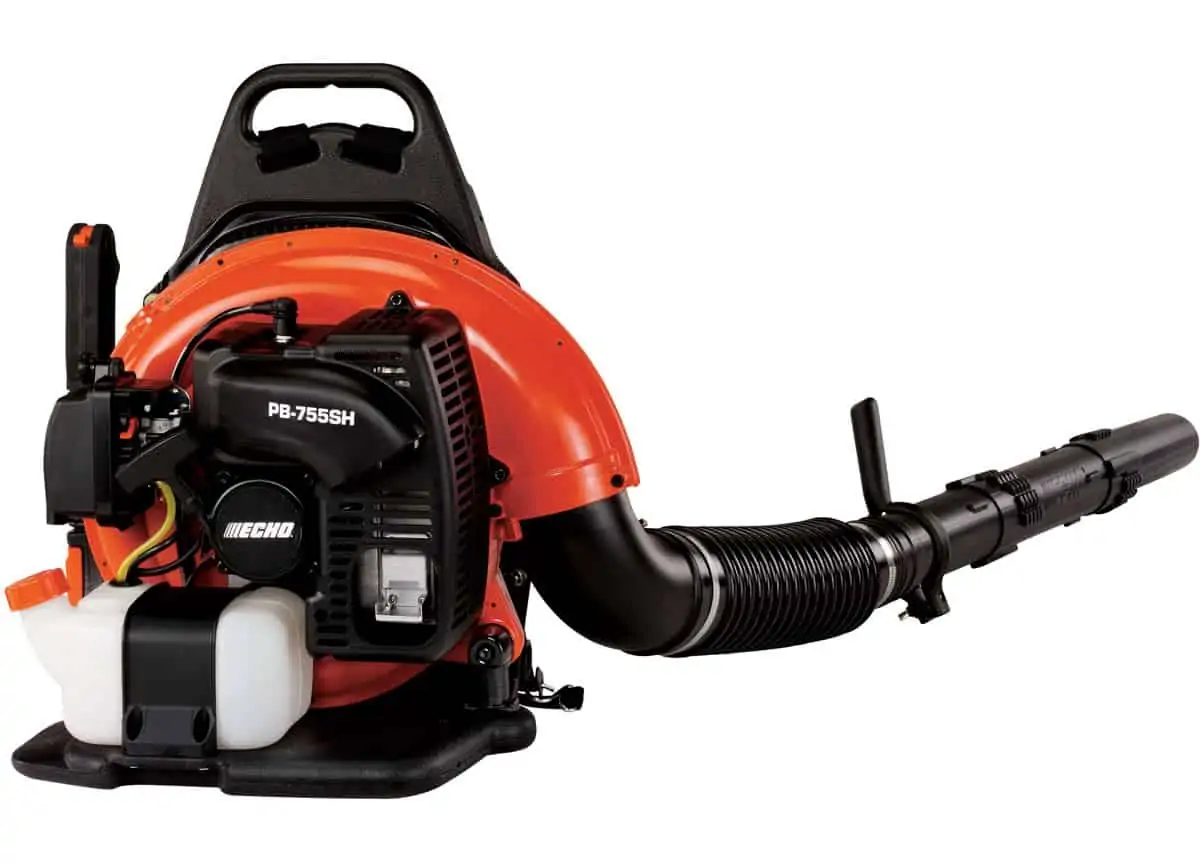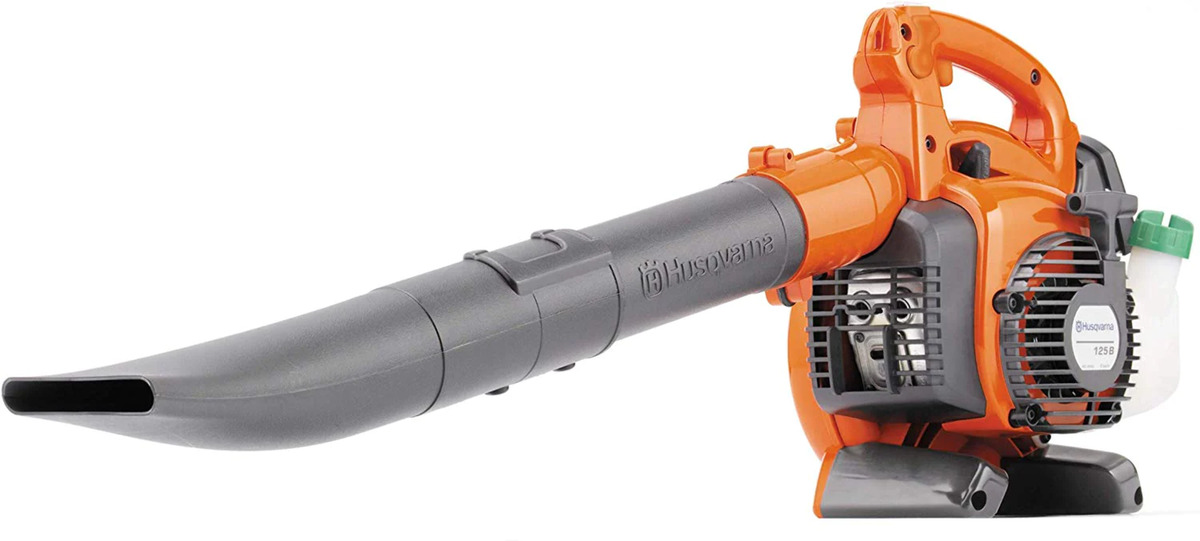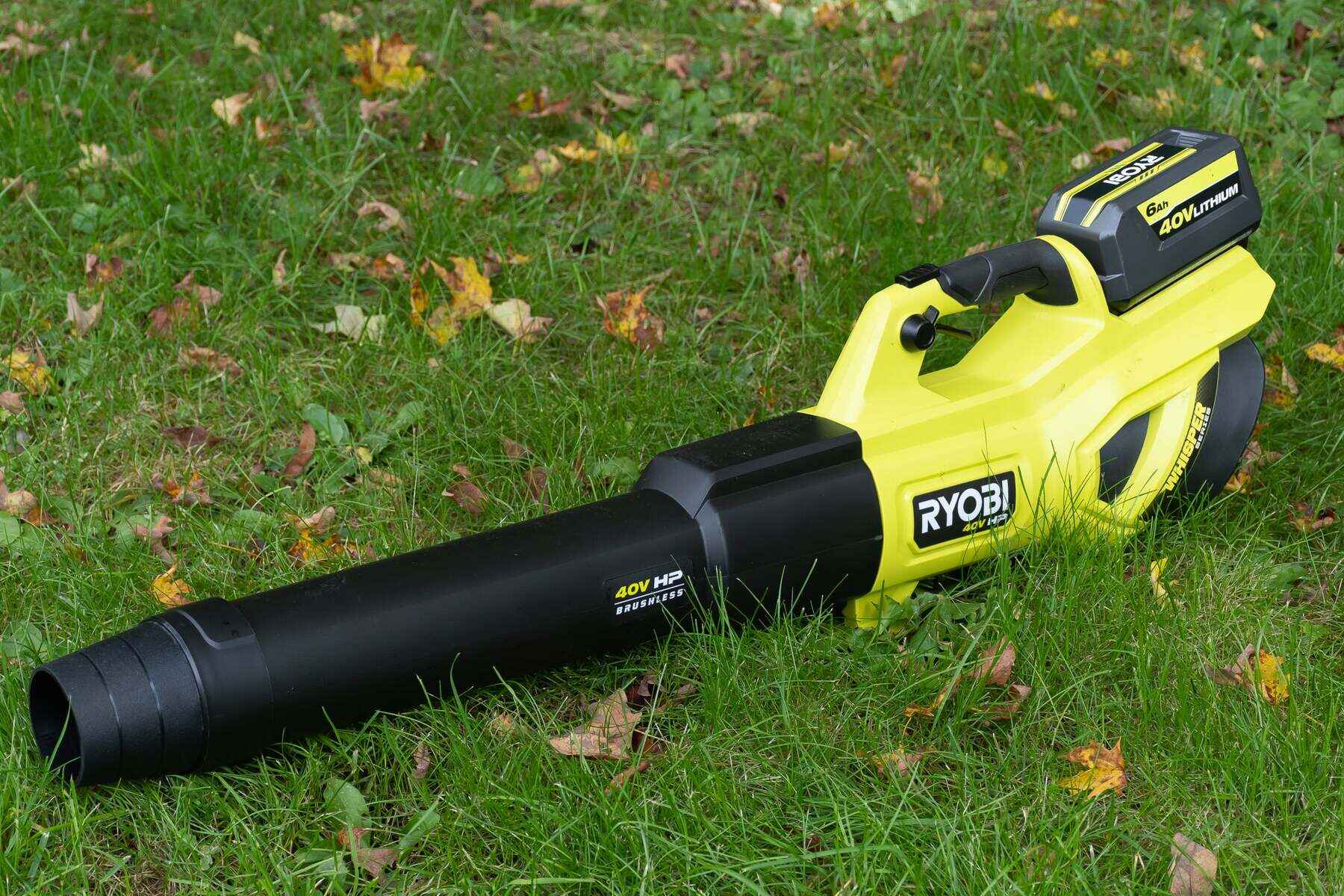Home>Gardening & Outdoor>Garden Tools & Equipment>How Many Ounces Of Gas For 3 Ounces Of Oil In A Leaf Blower


Garden Tools & Equipment
How Many Ounces Of Gas For 3 Ounces Of Oil In A Leaf Blower
Modified: January 14, 2024
Ensure optimal performance for your leaf blower with the right gas-to-oil ratio. Learn how many ounces of gas to use for every 3 ounces of oil. Find all the answers you need for garden tools and equipment.
(Many of the links in this article redirect to a specific reviewed product. Your purchase of these products through affiliate links helps to generate commission for Storables.com, at no extra cost. Learn more)
Introduction
When it comes to maintaining and operating a leaf blower, ensuring the correct oil-to-gas ratio is crucial for its optimal performance and longevity. This ratio determines the proportion of oil to gasoline that must be mixed to fuel the leaf blower's engine effectively. A common query among leaf blower users is, "How many ounces of gas for 3 ounces of oil in a leaf blower?" Understanding this ratio and the process of calculating it is fundamental for anyone seeking to keep their leaf blower in top working condition.
In the following sections, we will delve into the intricacies of the oil-to-gas ratio, explore how to calculate it for a leaf blower, and provide valuable tips for mixing oil and gas. By the end of this article, you'll have a comprehensive understanding of this essential aspect of leaf blower maintenance, empowering you to optimize its performance and extend its lifespan.
Key Takeaways:
- Ensure you mix the right amount of oil and gas for your leaf blower to keep it running smoothly. Follow the manufacturer’s recommended ratio and use precise measurements for optimal performance and longevity.
- When mixing oil and gas for your leaf blower, use a clean container, high-quality oil, and follow best practices. This ensures efficient combustion and minimizes the risk of engine damage.
Understanding the Oil-to-Gas Ratio
The oil-to-gas ratio, also known as the fuel mixture, refers to the proportion of oil to gasoline that is required to power a two-stroke engine, which is commonly found in leaf blowers. This ratio plays a vital role in lubricating the engine's internal components while ensuring proper combustion and minimizing harmful emissions. A well-maintained oil-to-gas ratio not only enhances the leaf blower's performance but also extends its longevity.
Typically, two-stroke engines operate on a mixture of gasoline and oil, unlike four-stroke engines that have separate compartments for gasoline and oil. The most common oil-to-gas ratios for two-stroke engines are 50:1, 40:1, and 32:1, indicating the amount of gasoline to oil in the mixture. For instance, a 50:1 ratio requires 50 parts of gasoline to 1 part of oil, while a 40:1 ratio necessitates 40 parts of gasoline to 1 part of oil.
It is essential to adhere to the manufacturer's recommended oil-to-gas ratio for your specific leaf blower model. Deviating from this ratio can lead to inadequate lubrication, excessive carbon buildup, and compromised engine performance. Additionally, using the wrong ratio may void the warranty and result in costly repairs or replacements.
Understanding the significance of the oil-to-gas ratio is pivotal in preserving the efficiency and durability of your leaf blower. With this knowledge, you can proceed to calculate the appropriate ratio for your leaf blower, ensuring that it operates at its optimal capacity while minimizing environmental impact.
Calculating the Oil-to-Gas Ratio for a Leaf Blower
Calculating the oil-to-gas ratio for your leaf blower involves a straightforward process that ensures the precise mixing of oil and gasoline, thereby safeguarding the engine's functionality. To begin, you must ascertain the manufacturer's recommended ratio for your specific leaf blower model. This information is typically detailed in the user manual or provided by the manufacturer.
Once you have identified the recommended ratio, you can proceed to calculate the amount of oil required for a specific quantity of gasoline. For instance, if your leaf blower operates on a 50:1 ratio and you have 3 ounces of oil, the calculation is as follows:
- Divide the total ounces of gasoline by the second number in the ratio (e.g., 50 for a 50:1 ratio).
- For 3 ounces of oil, the calculation would be: 3 / 50 = 0.06 ounces.
- This result indicates that for every 3 ounces of oil, you would require 0.06 ounces of oil for a 50:1 ratio.
Conversely, if you have a specific quantity of gasoline and need to determine the amount of oil required, you can use the following formula:
- Multiply the total ounces of gasoline by the second number in the ratio (e.g., 50 for a 50:1 ratio).
- For example, if you have 1 gallon (128 ounces) of gasoline for a 50:1 ratio, the calculation would be: 128 * (1/50) = 2.56 ounces.
- This result indicates that for 128 ounces of gasoline, you would need 2.56 ounces of oil for a 50:1 ratio.
By accurately calculating the oil-to-gas ratio, you can ensure that your leaf blower receives the appropriate fuel mixture, promoting efficient combustion and minimizing the risk of engine damage. This meticulous approach to fuel mixing is integral to the overall maintenance and performance of your leaf blower, enabling it to operate optimally and sustain its longevity.
Always follow the manufacturer’s recommended fuel mixture for your leaf blower. Typically, it’s a 50:1 ratio, which means 50 parts gas to 1 part oil. For 3 ounces of oil, you’ll need 150 ounces of gas.
Tips for Mixing Oil and Gas
When it comes to mixing oil and gas for your leaf blower, precision and adherence to best practices are essential to maintain the engine's efficiency and longevity. Here are some valuable tips to ensure the proper mixing of oil and gas:
- Use a Clean Container: Begin by selecting a clean and dry container specifically designated for mixing fuel. This prevents contaminants from compromising the integrity of the fuel mixture.
- Measure Accurately: Utilize a reliable measuring cup or container to accurately measure the precise amounts of oil and gasoline as per the manufacturer's recommended ratio. Even minor discrepancies in the mixture can impact the engine's performance.
- Pre-Mixing Shake: Before adding the oil to the gasoline, gently shake the gasoline container to ensure uniformity, as this facilitates the even distribution of oil when mixed.
- Use High-Quality Oil: Opt for high-quality, two-stroke engine oil that is specifically formulated for small engines. This helps maintain proper lubrication and minimizes carbon buildup within the engine.
- Stir Thoroughly: Once the oil is added to the gasoline, stir the mixture thoroughly to achieve a homogeneous blend. This ensures that the oil is uniformly dispersed in the gasoline, promoting consistent lubrication during combustion.
- Store Properly: After mixing the oil and gas, securely seal the container and store it in a cool, dry place away from direct sunlight and potential sources of heat or ignition.
- Use Fresh Mixture: Whenever possible, prepare fresh fuel mixtures rather than storing them for extended periods. Fresh mixtures minimize the risk of oil separation and degradation, preserving the fuel's efficacy.
- Dispose of Excess Mixture Responsibly: If you have excess fuel mixture, dispose of it in accordance with local regulations and environmental guidelines to prevent ecological harm.
By adhering to these tips, you can ensure that the oil and gas are mixed accurately and effectively, thereby optimizing the performance and longevity of your leaf blower. Consistent attention to the fuel mixing process contributes to the overall maintenance and reliability of the equipment, allowing you to tackle outdoor tasks with confidence and efficiency.
Conclusion
Mastering the oil-to-gas ratio for your leaf blower is a fundamental aspect of its maintenance and operation. By understanding the significance of this ratio and the process of calculating it, you can ensure that your leaf blower receives the optimal fuel mixture, promoting efficient combustion and minimizing potential engine issues. Adhering to the manufacturer’s recommended ratio and employing precise measurements when mixing oil and gas are pivotal in safeguarding the engine’s performance and longevity.
Furthermore, the meticulous approach to fuel mixing, coupled with the utilization of high-quality oil and adherence to best practices, enhances the overall reliability and efficiency of your leaf blower. By following the tips for mixing oil and gas, you can maintain the integrity of the fuel mixture and mitigate the risk of engine damage, enabling your leaf blower to operate at its peak capacity.
Ultimately, the proper maintenance of the oil-to-gas ratio empowers you to maximize the functionality and lifespan of your leaf blower, ensuring that it remains a dependable and indispensable tool for maintaining your outdoor spaces. With a thorough understanding of the oil-to-gas ratio and the meticulous approach to fuel mixing, you can confidently tackle outdoor tasks, knowing that your leaf blower is primed for optimal performance and longevity.
By incorporating these practices into your leaf blower maintenance routine, you can enjoy the convenience and efficiency that this essential outdoor equipment provides, while contributing to its sustained durability and reliability.
Frequently Asked Questions about How Many Ounces Of Gas For 3 Ounces Of Oil In A Leaf Blower
Was this page helpful?
At Storables.com, we guarantee accurate and reliable information. Our content, validated by Expert Board Contributors, is crafted following stringent Editorial Policies. We're committed to providing you with well-researched, expert-backed insights for all your informational needs.
















0 thoughts on “How Many Ounces Of Gas For 3 Ounces Of Oil In A Leaf Blower”